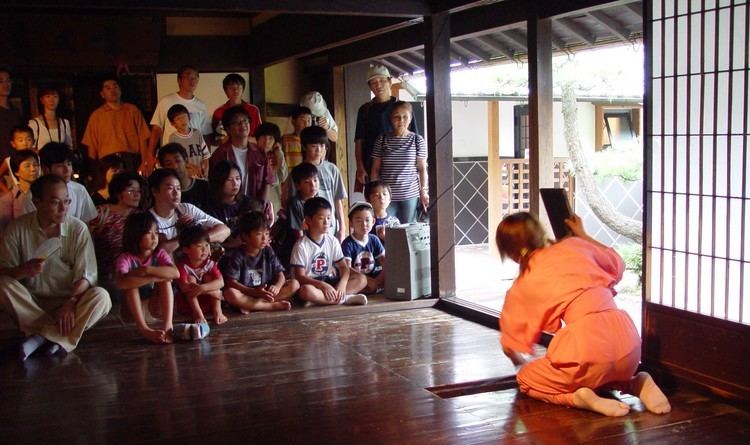 | ||
Iga ry ninjutsu balls of fire
Iga-ryū (伊賀流, "the Iga School") is a historical school of ninjutsu, according to Japanese legend. It became one of the two most well-known ninja schools in Japan, along with the Kōga-ryū. The Iga-ryū originated in the Iga Province in the area around the towns of Iga and Ueno (modern Iga City in Mie Prefecture). Iga-mono is a synonym for Iga ninja.
Contents
History

Since the Nara period, the Iga district had supplied lumber to jisha (寺社, temple-shrines). But in the Kamakura period, jisha declined in influence while shugo (governors) and jitō (manor administrators) grew dominant. The power of these functionaries then waned in Iga while that of bushi (warriors) rose instead. Iga was divided into local jizamurai regions locked in guerrilla war for which Iga warriors developed specialized skills and tactics. The Kōga-ryū school began in a similar way.

During the early Muromachi period, the people of Iga became independent of their feudal overlords and established a kind of republic--Iga Sokoku Ikki (伊賀惣国一揆) in Japanese. Iga-mono 伊賀者 (Iga men) first appear in historical records in 1487 when the Shogun Ashikaga Yoshihisa attacked Rokkaku Takayori, the daimyō of southern Ōmi Province from the Rokkaku clan. Both Iga and Koga ninja fought on the side of Rokkaku, helping to successfully repel the shogun's attack. In 1579, warlord Oda Nobunaga's son Oda Nobukatsu launched an unsuccessful attack against the Iga Republic. In 1581, Oda Nobunaga himself attacked Iga from six directions with a force of 40 to 60 thousand men, about a ten to one advantage, and slaughtered many Iga ninja and their families. The Iga held only two castles when Nobunaga declared a ceasefire and allowed some of the ninja to escape.

In 1582, during the turmoil following Oda Nobunaga's death, Hattori Hanzō advised Tokugawa Ieyasu to escape to Mikawa through the Kōga and Iga regions. Ieyasu, when he became the shogun, employed ninja to guard Edo Castle—the headquarters of the Tokugawa shogunate—and to supply intelligence. He settled 200 men from the Iga-ryū in the Yotsuya neighbourhood of Edo (Tokyo). Hanzo's Gate in Edo Castle took its name from the nearby residence of the Hattori clan.

Hattori Hanzō's son Hattori Masanari commanded the castle's Iga guards but proved a less successful leader than his father. In 1606, the Iga men rebelled due to harsh treatment. They continued to serve the shogunate until Tokugawa Yoshimune (ruled 1716–1745) dismissed all ninja from his intelligence network and replaced them with people from Kii Province.
Organization

Iga ninja were trained in disguise, escape, concealment, explosives, medicines, poisons, unarmed combat, and a multitude of weaponry. They used scaling hooks for climbing and supposedly employed special water-walking shoes called Mizugumo (displayed at the Iga-ryu Ninja Museum).
The ninja of the Iga-ryū were divided into three classes: high ninja (jonin), middle ninja (chunin) and low ninja (genin).
